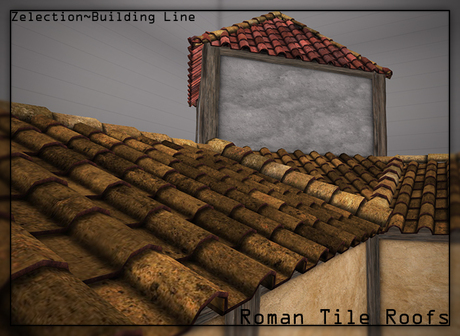
CertainTeed's Diamond Deck Synthetic Overlayment is a strong, durable layer made of polymer and reinforced with gauze. It is suitable for installation under wood, asphalt roofing and other types shingles due to its water-resistant properties and higher dimensional stability. The product eliminates wrinkles that can result from hygroexpansion. Its abrasion-resistant finish helps to stop the growth and spread of mold and mildew.
CertainTeed, a General Roofing Manufacturing Company, was founded in 1904. Its slogan was "Quality made certain, satisfaction guaranteed." Diamond deck is a high grade underlayment with exceptional durability. It also resists wrinkles. CertainTeed shingles are available in many colors and styles, making it a great choice for any new roof.

Its water-resistant properties make it suitable for all roofing types, including metal, slate, and shingle. It is easy to install and provides homeowners with a modern look. DiamondDeck is extremely easy to put up and can be used on roofing on flat surfaces. It doesn't matter what roofing system you use, the best underlayment will do the job.
DiamondDeck, a synthetic underlayment, is water-resistant. It's compatible for many roofing systems, including shake, metal, and shingle. Also, it's slip resistant, which is important for homeowners. It will keep your roof dry and protect it from the harmful effects of hail, high winds, and snow. DiamondDeck's slippery surface will keep this type of underlayment in place.
A synthetic roof material is the best type of underlayment. It is made from polymer materials, and it is water-resistant. It is made of polyester and is UL-classified. It can also be customized to fit any situation. It will last many years if it is properly installed. It is a great choice for commercial buildings. It's also a great choice for low-sloping roofing.

CertainTeed is the best roof material. DiamondDeck is a unique product. Its diamond-shaped profile is very similar in appearance to natural stone. This material is made of polyethylene, which is water-resistant. It is ideal for roofing applications and is an excellent choice for residential and commercial uses. It offers great value for money. It's durable.
Under-couche. An under-couche standard was made from recycled cardboard and an enduite with goudron. High-quality synthetic under-couches of the highest quality are made from material that does not degrade or lose etancheite. The diamond-couche can also prevent wood from rotting. This product is perfect for those who love to entertain their deck all year. Its durability makes it an excellent choice for outdoor projects.
FAQ
Is it better to hire either a general or subcontractor?
The cost of hiring a general contractor can be higher than that of a subcontractor. A general contractor has many employees, so they often charge their clients a lot of money for labor costs. On the other hand, a subcontractor only hires one employee, so he or she charges less per hour.
Are there permits needed to renovate my house
Yes. Before you start any home improvements project, permits are necessary. In most cases, you will need a building permit and a plumbing permit. A zoning permit is also required depending on the type and extent of work you are performing.
Can I rent a dumpster?
After completing a home renovation, you can rent an dumpster. Renting a dumpster is a great way to keep your yard free from trash and debris.
How important is it that you are preapproved for a loan?
Getting pre-approved for a mortgage is very important because it gives you an idea of how much money you need to borrow. It will also help you determine if you are qualified for a specific loan program.
How much does it take to renovate a home?
Renovations are usually between $5,000 and $50,000. Renovations can cost homeowners anywhere from $10,000 to $20,000
Can you live in your house while it's being renovated?
Yes, you can live in your house while you renovate it.
Can you live in a house while renovations are going on? The time taken to complete the work will impact the answer. If the renovation process lasts less than 2 months, then yes, you can live in your home while it's under construction. You cannot live in your house while the renovation process is ongoing if it lasts more than two years.
The reason why you should not live in your home when there is a major construction project going on is because you might get hurt or even killed due to falling objects from the building site. There is also the possibility of dust and noise pollution from the heavy machinery at the job site.
This is especially true for multi-story houses. In such cases, vibrations and noises from construction workers may cause irreparable damage to your property.
You'll also need to cope with the inconvenience of living in temporary housing while your house is being renovated. You won't have all the amenities of your home.
When your dryer and washing machine are in repair, for example, you won't have access to them. The workers will make loud banging noises, paint fumes, and chemicals obstruct your ability to use your dryer and washing machine.
All these factors can result in stress and anxiety within your family. It is therefore important to plan ahead so that you don't end up feeling overwhelmed by the situation.
Do your research before you begin renovating your home. You can avoid costly mistakes later.
You can also consider professional advice from a trusted contractor to ensure smooth running of your project.
Statistics
- According to the National Association of the Remodeling Industry's 2019 remodeling impact report , realtors estimate that homeowners can recover 59% of the cost of a complete kitchen renovation if they sell their home. (bhg.com)
- On jumbo loans of more than $636,150, you'll be able to borrow up to 80% of the home's completed value. (kiplinger.com)
- The average fixed rate for a home-equity loan was recently 5.27%, and the average variable rate for a HELOC was 5.49%, according to Bankrate.com. (kiplinger.com)
- Design-builders may ask for a down payment of up to 25% or 33% of the job cost, says the NARI. (kiplinger.com)
- They'll usually lend up to 90% of your home's "as-completed" value, but no more than $424,100 in most locales or $636,150 in high-cost areas. (kiplinger.com)
External Links
How To
How do you plan a complete home remodel?
Planning a whole-house remodel requires planning and research. Before you start your project, there are many factors to consider. It is important to determine what type of home improvements you are looking to make. There are many categories that you could choose from: kitchen, bathroom or bedroom; living room or dining room. Once you've decided on which category to work on you will need to calculate how much money is available for your project. If you are new to working in homes, budget at least $5,000 for each room. You might be able get away with less if you have previous experience.
Once you have figured out how much money you can afford to spend, you'll have to determine how big of a job you want to tackle. For example, if you only have enough money for a small kitchen remodel, you won't be able to add a new flooring surface, install a new countertop, or even paint the walls. If you have the money to do a complete kitchen remodel, you will be able to handle almost anything.
Next, look for a contractor with experience in the type or project you are looking to tackle. This will guarantee quality results, and it will save you time later. Once you have hired a contractor, gather materials and other supplies. You might need to make everything from scratch depending upon the size of your project. However, you won't have to worry about finding the exact item you are looking for in the many pre-made shops.
Once you have all of the necessary supplies, you can start making plans. You will first need to sketch out an outline of the areas you plan to place appliances and furniture. Then you will design the layout. Be sure to leave enough room for electric outlets and plumbing. Also, try to put the most used areas near the front door so that visitors can easily access them. Final touches to your design include choosing the right colors and finishes. To save money and keep your budget low, you should stick to neutral tones.
Once you have completed your plan, it is time to begin building. It's important that you check the codes in your area before you start construction. While permits are required in some cities, homeowners can build without one in others. To begin construction you will first need to take down all walls and floors. You will then lay plywood sheets to protect your new flooring. Next, nail or screw pieces of wood together to form the frame that will house your cabinets. Finally, attach doors to the frame.
You'll need to finish a few final touches once you're done. You'll likely want to cover any exposed wires and pipes. You will need to use tape and plastic sheeting for this purpose. Also, you will need to hang mirrors or pictures. Make sure to keep your work area neat and tidy.
If you follow these steps, you'll end up with a beautiful, functional home that looks great and saves you lots of money. Now that you have a basic understanding of how to plan a house remodel, it's time to get started.